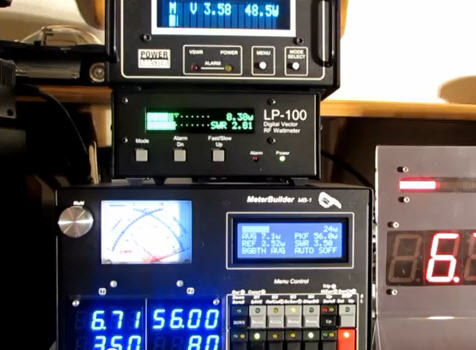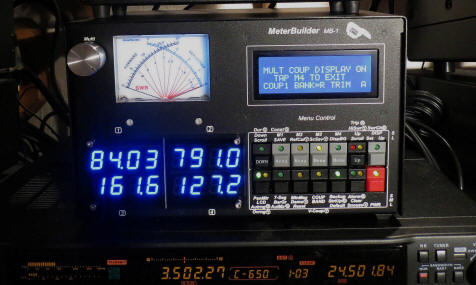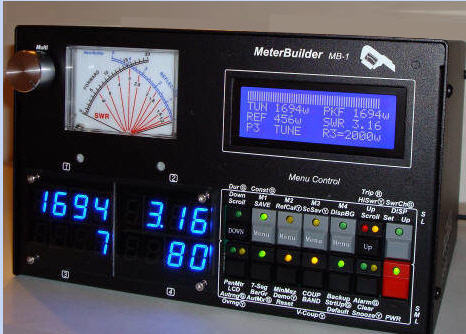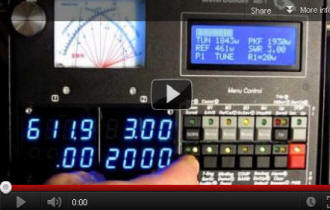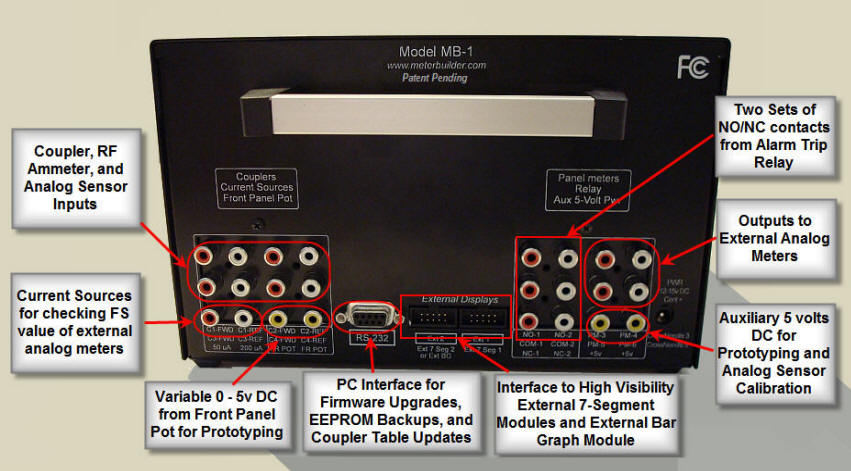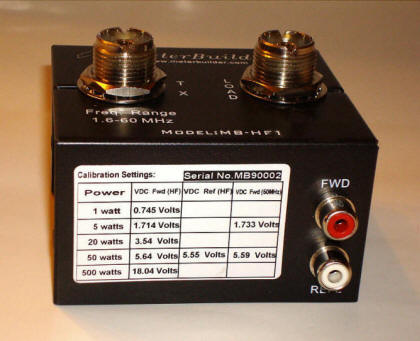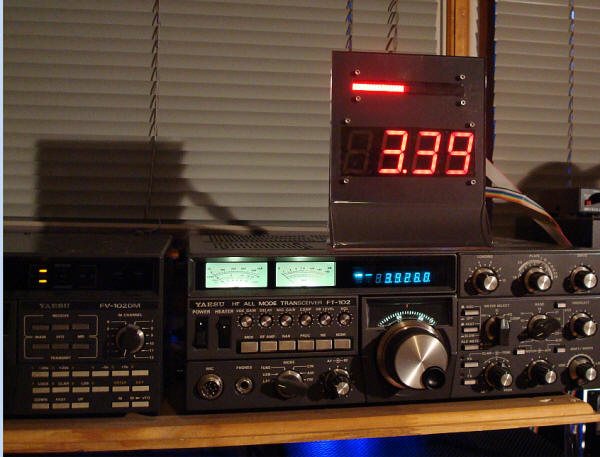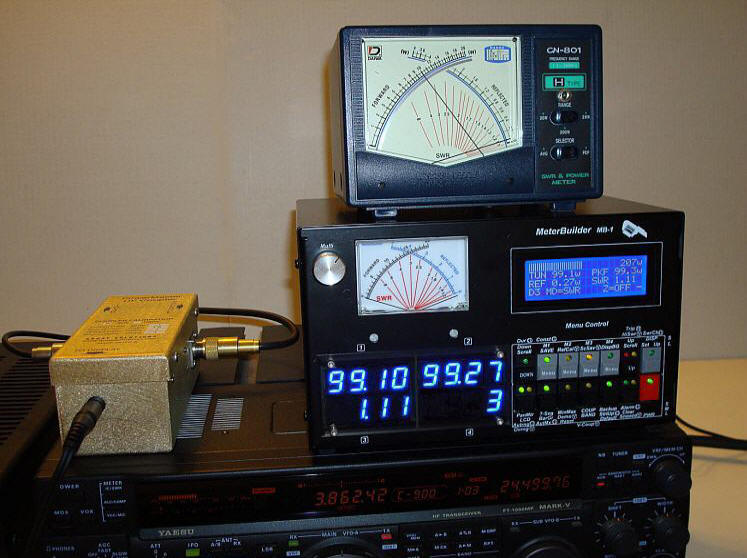 Index
Index
- Bird Line Sections
- Comparisons
- Contact Information
- Custom Meter Scales
- Customizing MB-1
- Documentation
- Downloads
- Expansion Features
- Evaluating Analog Meters
- Evaluating Couplers
- FAQ
- Features
- Generic Meter and RF current Measurements
- Hardware Diagnostics
- Interfacing your own Analog Meters
- Interfacing your own Couplers
- Misc
- Prices
- Programming MB-1
- Projects
- Quick Reference Guide - Menus
- Quick Reference Guide - Switches and LEDs
- Recent Site Updates
- Reviews
- Specifications
- Simulator
- Troubleshooting
- Useful Links
- Using Different Couplers
- Utilities
- Videos
Copyright © 2011 - 2020 FullWave, LLC. All rights
reserved.
MeterBuilder MB-1 Programmable
RF Power Meter
The Most Versatile RF Power Meter Available
3-24-2015 - Patent Issued
for MeterBuilder Measurement Algorithms
Availability:
MB1 Kits and Assembled Units:
As of 3-29-2020,
Not available until further notice.
We apologize for the inconvenience.
September 2013 QST Review of the MeterBuilder MB-1
The MeterBuilder MB-1 can also be used for a variety of
Instrumentation Applications and Industrial Measurement
Applications.
Check out www.measure-anything.com
The Advantage of
Analog Meter Displays and
Average Power Mode when using Tuning Pulsers
We have always felt that an analog meter is the best display device for RF power measurements. While numerical displays can give you more resolution, nothing comes close to an analog meter for giving you the most information at a single glance, especially if the analog meter is a crossneedle meter. Of course, in order to not take a step backwards compared to a conventional analog meter, the meter needs to have a real time analog display as does the MB-1.
Recently, some comments were made on the Internet regarding MB-1's superior ability to work with tuning pulsers compared to the other popular digital power meters. The website of one of the popular digital meters suggests that the problem encountered when using a pulser with their meter is due to the overshoot of pulsers, and the RF power meter's measurement samples being out of sync with the pulses generated by the pulsers, and suggests that one work around is to place an old analog meter in series with their meter and use the analog meter when adjusting your Amp. Obviously, we don't think that's a practical solution. Why not get the advantages of the most flexible RF power meter on the market including a real time crossneedle analog display?
Since we are talking
about pulsers here, instructions from the popular pulsers invariably
state the following:
When you tune your Amp to produce maximum average power with a pulser,
it is almost
certainly tuned for maximum peak power.
Since MB-1 can measure average power, if you prefer, you can set
MB-1's bar graph or analog meter to display average power, and simply
adjust your Amp or Tuner for maximum output using a pulser. Either
approach, using the MB-1's analog meter in instantaneous mode, or
displaying average power with the MB-1's analog meter or bar graph, will
give you reliable and repeatable results with your pulser.
New
Display all 4 RF Power Couplers Simultaneously!
Why Another RF Power Meter?
Real Time Analog Crossneedle Meter: Prior to new breed of digital meters, crossneedle power meters were the de facto standard since they provided three measurements at a glance, and you could effectively see your modulation or keyed CW with the meter's "bounce". Alpha came out with its digital meter, which had an analog meter movement. But it was a single needle movement and was not responsive enough to follow voice or keyed CW in a useful way.
Average Power Measurements: Digging into the capability of the other digital meters, it was also surprising to find that most have no average power measurement capability. Considering that average power is arguably a more useful measurement than peak power for voice modes such as SSB, this seemed to be a serious shortcoming as well.
Accuracy: With the exception of the Alpha, it was clear from the product reviews of the other digital meters that a single calibration trim point, such as is used in most of the other digital power meters, was not adequate to meet or beat the accuracy claims of those meters' manufacturers across the entire power and frequency range. This was the motivation for MeterBuilder’s Multi Point point calibration algorithm. And with a bit more work, we were able to generalize that capability (the Custom Coupler Calibration feature) so that you can use just about any Bruene Type coupler with MB-1. This eliminates the need to buy costly add-on proprietary couplers for VHF/UHF band operation, or simply for connection to other transmitters.
Limited Display Capability: Most meters provide the ability to display a single power type in numerical form - e.g., Forward Power. If you want to see two power types simultaneously - e.g., Forward and Reflected Power, you have to sacrifice SWR readings on the numeric display with some of the meters.
Bar Graph Operation: Those digital meters with auto range bar graphs change the bar graph's full scale range based on the current power level. This seems like an advantage at first. The problem here is that with the current implementations, by looking at the bar graph alone, you do not know what range the bar graph is on. For example, if your amplifier trips unexpectedly, you may not notice it by looking at the bar graph since the auto ranging simply down-ranges, and continues to fill out the bar graph display based on the new (lower) full scale range, making the bar graph display look similar to the way it looked before the amp tripped. MeterBuilder's AutoMax feature addresses this limitation, and still gives you maximum sensitivity and resolution by automatically adjusting to the maximum full scale range to your current operating power. There is never any ambiguity about the bar graph range since it is also displayed in numerical form along with the bar graph.
Remote Display Capabilities: While many of the popular digital meters support remote couplers, none support stand alone remote displays. With many users having multiple rigs, it is cost prohibitive to place a power meter near each one. With MB-1, you can place inexpensive analog meter movements (including crossneedle meter movements) up to 150 feet from the control head and drive them with MB-1. MB-1 supports up to four remote analog displays. And like the generalized coupler calibration feature discussed above, MB-1 will work with virtually any analog meter movement of your choosing as long as it has a 1 mA or better sensitivity. (Lots of inexpensive meter movements that will work with MB-1 are readily available on EBay).
Capture/Hold Capability:
This feature is similar to the Min/Max feature in the high end
Bird 4391A Digital Power Meter.
Sometimes you see a brief overshoot or power dip, but have no
way to quantify its magnitude with the other digital meters.
MB-1 has a Min/Max capture and hold capability that allows you
specify a parameter of interest that the meter monitors,
recording that parameter's highest and lowest value. Those
values are held indefinitely unless replaced with a higher (or
lower) value, or until you manually reset the Min/Max values to
initiate a new capture interval. This feature can run
simultaneously with MB-1's normal power and SWR measurement and
display functions.
This feature is also useful for "load tests" or repair
verification tests. Got a transceiver or amplifier that was
recently repaired by a vendor for an intermittent or erratic
power level condition? Set the transceiver or amp on a safe
power level for extended operation, and let it run for several
hours. MB-1 will catch any dropouts or spikes.
Performance: MeterBuilder's processing speed of 500 samples per second, combined with it's ability to process and display instantaneous power, allows it it to capture short term events that the other meters miss.
No PC Required for Setup: To change some settings on some of the other meters, a PC interface is necessary. All of MB-1's features are controllable directly from the Display Head. The only time you need to connect a PC to MB-1 is to update the firmware, or back up your eeprom settings.
In addition to addressing the above issues, we added several other features that are unique to the MB-1. The gold checkmarks in the RF Power Meter Comparison Chart highlight those features that are unique to the MB-1 (40 features in all). Some of these features are Patent Pending.
Also
New
- Blue 7-segment LEDs now
included
with Expansion Kit (for orders placed after 5-1-2013)
Of the popular Digital Amateur Radio Power Meters,
MB-1 is the
only one with three distinct forward power
modes, with the capability of
displaying all three modes simultaneously if desired:
1. Tune - Displays instantaneous power - for a quick response when
tuning your transmitter, amplifier, or antenna tuner, or for real time
monitoring of voice or keyed CW on a fast response display device such
as an analog meter.
2. Peak Power - Fast peak power detection (up to 500 samples per
second).
3. Average Power - with sensible time constants to provide meaningful
measurements. The most effective way to monitor your "talk power".
And with MB-1's extensive display features, any of these power modes
can be displayed on any of MB-1's display devices (numeric, bar graph,
or analog meter)
The only Digital Amateur Radio Power Meter with a real time Analog Meter.
A Digital Power Meter that can actually measure and display your "Talk Power"!
Extensive Digital Filtering for stable and repeatable readings.
Display up to Eight different measurement types simultaneously.
Interface your own Analog Meters and Couplers (including Bird Line Sections) to MB-1. This means that your MB-1 supports all of the frequency ranges that Bird slugs support!
Unique with MeterBuilder: 60 Point Calibration Curve -
Calibrate your own couplers to within 1% of any Measurement Reference.The website and documentation contain lots of overview and tutorial information. With a MeterBuilder MB-1, you get a lot more more than just a power meter!
Please note - we are accepting U.S. orders only at this time.
The MB-1 is available in both kit
form and assembled and calibrated.
The kit requires soldering. The kit also includes a
preassembled coupler with DC voltage/power benchmarks,
and therefore
requires only a digital voltmeter for accurate
calibration. All
components are through-hole (no surface mount components
to install).
The MB-1 Meter in the picture below is being driven by the Inboard Simulator.
|
|
MB-1 Rear Panel
|
|
Small Footprint Pre-assembled MB-HF1 CouplerA nineteen point calibration table is preloaded into
MB-1 firmware. With the MB-1 kit, using factory benchmarks printed on each
|
|
Seamless Integration with Bird Line SectionsAlthough the venerable Bird 43 doesn't have the
extensive feature set of today's popular meters, the
Bird coupler elements are Of course, you are not limited to Bird elements. Most Bruene type HF, VHF, and UHF couplers can also be interfaced to MB-1. Use a single HF slug to cover the full legal power limit on all HF bands + 6 meters! |
|
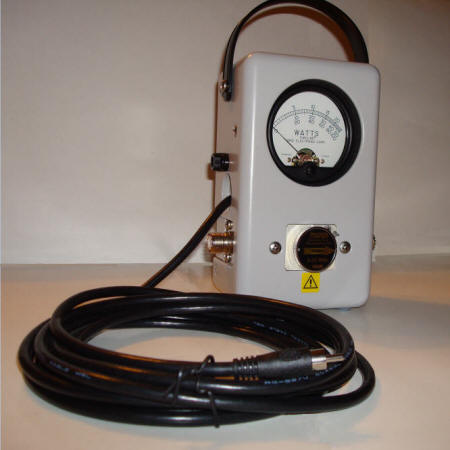 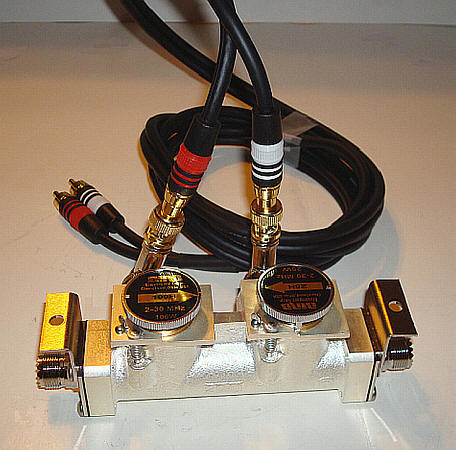 |
|
MeterBuilder™ MB-1 Features
- Extensive Digital Filtering for stable and repeatable readings.
- The only Digital RF Power Meter with a Real-Time Analog Meter (can track CW and voice).
- Fastest Bar Graph of any Digital RF Power Meter.
- Four Fully Programmable 4-Digit Seven Segment LED Displays - Display Measurements, Configuration information, or a combination of both.
- With MB-1, you can display peak power and average power simultaneously. You can't do that with the Alpha power meter, the LP-100, or the PowerMaster. In fact, with MB-1, you can display up to 8 measurement types simultaneously.
- Want to capture short duration events that the other meters totally miss? MB-1 typically processes 500 samples per second. When combined with MB-1's Min/Max feature, you have a true capture function that captures and holds the min and/or max value of any of the parameters that MB-1 is capable of measuring. An example of MB-1 capturing a 3 ms power dropout is given here.
- Map any Measurement to any Display Device.
- Quick, single push button access to commonly used menus.
- MB-HF1 Coupler Lineup requires just a DC Voltmeter or Multimeter (customer calibration is required for kits only).
- Interactive Hardware Diagnostic Software.
- Programmable Simulator for verifying custom Analog Meter calibration and custom Coupler calibration.
- Available in Kit form or Assembled and Calibrated. No surface mount components to install with kit.
- QRP Operation - Accurate low power
measurements, even for power levels < 1 watt. Programmable Full
Scale Ranges - 1 watt minimum
FS ranges for Analog Meter and Bar Graph. - All 75 MB-1 configuration parameters can be saved for automatic power-up restoral with the push of a single button.
Expand and Customize
Unique with MeterBuilder
- The Ability to Program MB-1 so that you can
directly connect your own Analog Panel Meters and Couplers
(Patent Pending) -
Eliminates the
need to buy additional (and sometimes costly) couplers if you already have couplers that meets your needs. - Customize your meter by selecting the 7-Segment LED Display colors, Meter Backlighting, and Front panel switches (kit only).
- Add External Hi Visibility 7-Segment LED Displays and a Hi Visibility Bar Graph LED module for unmatched readability.
MFJ Jumbo Meter Movement calibrated and being driven by MB-1.
External Displays shown in user-provided enclosure. An
inexpensive picture frame is being used above.
(Ghosting of unlit segments
is a photo artifact.)
Fully Programmable
- Advanced Menu Structure and Shortcut buttons simplify operation.
- Six user-defined configuration sets plus one Default
configuration set -
Save and Restore the entire meter configuration with the press of a button. Each Configuration
Set can give the meter its own personality. - Nineteen Separate Menus for unmatched flexibility.
- 4x20 Display incorporates setup Instructions to simplify
operation.
Finally, a meter with enough Real Estate to provide meaningful measurement headings and units. - Preloaded Coupler Calibration Table for the included MB-HF1 coupler.
- All meter functions controlled from front panel - no PC interface needed.
Interfacing to Other Couplers
and External Analog Meters
Below, MB-1's Custom
Calibration Features are being
used with a PowerMaster Coupler and a Daiwa Meter Movement
The MeterBuilder MB-1 is the only digital meter that provides the ability to directly interface to other manufacturers' couplers.
MB-1 can also directly interface to a wide range of external analog meters including surplus meters and meter movements from other manufacturers' equipment.
The photo below shows MB-1 being used with a competitor's coupler, the PowerMaster HF-3K, and an external Analog Meter. The PowerMaster coupler was calibrated with MB-1's Multipoint calibration feature. Power transmitted by a Yaesu Mark V is being applied to a dummy load through the PowerMaster coupler. The Forward and Reflected voltage outputs from the coupler are being fed into an MB-1 coupler port, processed by MB-1's software, and displayed on the 7-segment LEDs, the LCD, and the external analog meter.
The external analog meter below is the meter movement of a Daiwa 801 that has been disconnected from the internal Daiwa coupler and is being driven directly by MB-1 after being programmed using MB-1's Panel Meter calibration feature. Both needles of the Daiwa meter movement are being driven simultaneously by the MB-1. As with passive meters that incorporate crossneedle meter movements, both Forward and Reflected power are displayed simultaneously allowing the SWR to be read directly at the intersection of the two needles.
MB-1 is the only digital RF power meter that his this convenient and effective crossneedle arrangement. This is clearly the most efficient way to adjust or monitor an antenna tuner's operation. And MB-1's high processing rate provides a real time response when used with analog meters, including crossneedle meters like the one shown below. MB-1 is the only RF power meter with a linear scale crossneedle meter movement. Since the meter movement is driven by the software in the MB-1, there is no need to have the meter face to compensate for the nonlinear power vs. voltage relationship of the coupler. This results in uniform resolution over the entire range of the analog meter scale.
7-Segment LED Configuration:
Top Left - Instantaneous (Forward) Power
Top Right - Peak Power
Bottom Left - SWR
Bottom Right - Selected Coupler - (PowerMaster coupler is connected to Coupler Port 3)
MB-1 comes standard with BLUE 7-segment LEDs.
Since the 7-segment displays are installed on sockets, they can be easily replaced with other colors as shown in
the picture above. Any .52 inch (13.2 mm) common cathode display that meets the current requirements can be used.MB-1 Measurements using Other Manufacturers' Couplers
Average Power vs. Peak Power
Most of the popular digital RF power meters do a
good job of measuring peak power.
But they
either lack an average measurement mode altogether, or their
average mode
implementation, in our opinion,
does not provide useful measurements for Amateur Radio
use
(see
FAQ).
Peak power is fine for verifying
that your output approximately matches
your key down
power, and
thus gives you a useful
indication that your rig or amp is tuned
up to (and
is
still operating at) an expected power
level. However, for SSB,
it is average
power measurements that give you a good indication of your
signal’s “talk power”.
This is important when setting your mic gain and compressor
settings.
With MB-1, you will see a dramatic change in average power
measurements
as you
adjust your mic and
compressor settings, but as expected, peak
power measurements
will hardly
change. Since your signal’s
readability
depends upon your talk
power and not peak power, if your power meter does
not measure average power, you are
only seeing half the picture.
MB-1 can measure and display peak power and
average power simultaneously.
The measurements can be displayed on any of MB-1's display
devices (numeric,
bar graph,
analog meter, or external display devices). This point is emphasized in this
video.
The MeterBuilder MB-1 Programmable RF Power/SWR Meter by AD5X
Product Reviews on eHam
